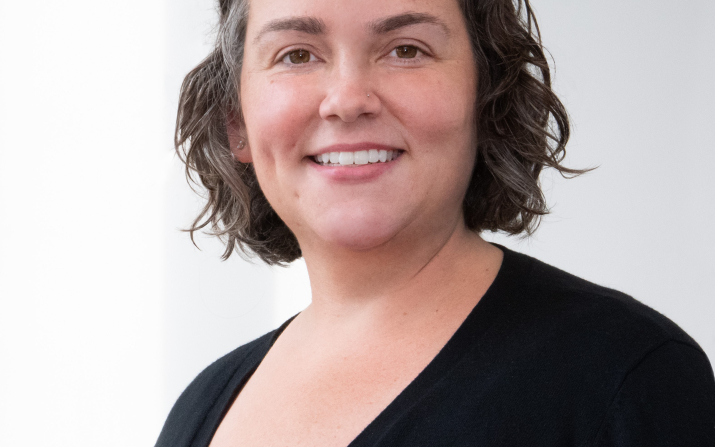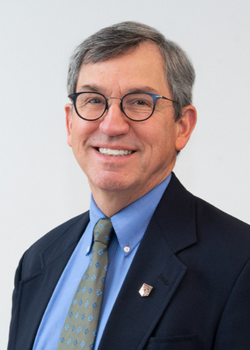SCSAM Engineer Spotlight: Nichole Hoven

Since her undergraduate studies at Baldwin-Wallace University, Nichole Hoven has enjoyed using analytical techniques. “I’ve always enjoyed doing surface analysis on materials,” she said.
Her B.S. in Chemistry has prepared Hoven to evolve with the flow of her career. Her first jobs after graduation were at two different startup companies working to transition technology from NASA Glenn Research Center (GRC) into engineered solutions by developing microfabrication techniques. These interactions enabled her to transition to NASA GRC as a full time contractor for Rochester Institute of Technology, where she researched microfabrication of devices from III-V semiconductors and used atomic force microscopy (AFM) and x-ray diffraction (XRD) to characterize and understand the resulting device structures.
In October 2015, Hoven came to Case Western Reserve University as an engineer in the Case School of Engineering’s Microfabrication Laboratory (CSE-MFL), where she facilitates research associated with the fabrication of microelectromechanical systems (MEMS), biomedical sensors, microfluidic and other devices. She utilizes photolithography, physical vapor deposition, etching and other fabrication techniques to complete the devices. “Working at a core facility is really satisfying, it has provided me an opportunity to work with different collaborators, and explore new areas of interest.”
In addition to device fabrication, Hoven is responsible for training students to become proficient in microfabrication and independent users of the MFL’s process tools. “As strong as Nichole is as a process engineer, she is even stronger as a trainer of the lab’s new student users,” says CSE-MFL Faculty Director Chris Zorman. “It is easy to see that she is genuinely interested in the success of her student trainees.”
In Spring 2021, she expanded her engagement beyond the CWRU microfabrication research community by splitting her time between the CSE-MFL and the Case School of Engineering Swagelok Center for Surface Analysis of Materials (CSE-SCSAM). Since Hoven started in SCSAM, she has enjoyed interacting with internal and external researchers from CWRU, local non-profits, and industry, as well as learning new techniques, opportunities, and materials manufacturing challenges. “I used analytical techniques as a student and a researcher on a team, but not like I am now,” she said. As a CSE-SCSAM engineer, Nichole gets to research how the analytical tools can be modified, exploited, or combined instead of relying on just using the instrument as a tool to enable a particular technology. Now she can imagine how the tools are research questions, and how different techniques can be applied in interesting combinations to provide new insight to any material challenge that passes through the core facilities' doors. She enjoys the interdepartmental aspect of being a member of the CSE-SCSAM research team, which draws users ranging in expertise and career stage, from student, faculty, and staff researchers from all of Case Western Reserve University and beyond. “Nichole’s breadth of professional experiences, having both worked in industry, and training first-year students makes her a valuable asset to the CSE-SCSAM and CSE-MFL research communities. In providing a transparent process that enables Nichole to split her time between the two centers, we can better support all CWRU researchers,” says CSE-SCSAM Faculty Director Jennifer Carter.
"It has been a pleasure to work with Nichole and watch her learn and grow into her position as a SCSAM engineer,” added CSE-SCSAM Executive Director Jeffrey Pigott. “Nichole is an integral part of the research team and has made significant contributions to the ‘new’ SCSAM, especially leveraging her dual role in the MFL and expertise in microfabrication."
For example, Hoven was able to leverage both her microfabrication experiences and analytical experiences as a mentor to SCSAM fellow Sylvie Crowell, a BS/MS student in the Department of Materials Science and Engineering. Hoven and Crowell used SCSAM’s AFM to study the surface roughness and obtain modulus data on Crowell’s silicon carbide thin film substrates before and after sintering. Hoven pointed out that the microscope is not typically used to obtain modulus data and that it was exciting to support an undergraduate student to use an instrument in an unconventional way.
In SCSAM, Hoven is responsible for the AFM, XRDs, Keyence 3D digital optical microscope, nanoindenter, and the ion polisher. She particularly enjoyed reintroducing herself to the breadth of atomic force microscope capabilities. This breadth of the AFM’s capabilities means that Hoven works with a variety of users, from first year undergraduate students to Ph.D. researchers at local Northeast Ohio companies. For example, she has been working with local industrial researchers using the atomic force microscope to study a graphite-based material; supplying them with useful information about their product.
This summer, Hoven will mentor another SCSAM student fellow, this time from the Department of Mechanical and Aerospace Engineering, as they try to use AFM to quantify the surface roughness of current collectors used in lithium-ion batteries. Hoven looks forward to seeing the student’s samples and what type of data they will collect, as well as introducing them to a new technique.
"I’m proud to have worked in different areas and environments throughout my career. Starting off with a background in chemistry, and ending up in an engineering position doing different types of surface analysis has been really fulfilling,” said Hoven.


